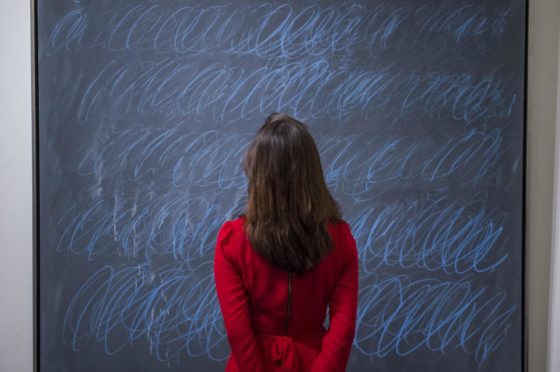“I have never been against new art as such; some of it is good, much is crap, most is somewhere in between.” Robert Hughes was the most straight-talking of critics, and rarely struggled with Emperor’s New Clothes syndrome.
Lacking Hughes’s learning and formidable eye – who doesn’t – I would nevertheless concur with the statement. I don’t dislike modern art; some of it I like a great deal. I try to understand its arguments and abstractions, and when I fail, which is quite often, I’m willing to accept the fault can be my own.
It’s a good rule of thumb that in cultural matters one should exercise humility – if a song or a book or a sculpture doesn’t appeal this doesn’t mean the work lacks merit.
Someone somewhere is in raptures over a dead piglet that has been painted with blue spots and had wings sewn on to it as a statement about the ineffability of the Sublime as well as a swipe against the authoritarianism of Vladimir Putin and the refusal of the artist’s parents to buy them a ZX Spectrum for Christmas in 1984. Art is always subjective. Perhaps this one’s just not for you.
But surely, sometimes crap is just crap.
Last week I woke to the news that a work entitled (or not entitled) “Untitled” by the abstract artist Cy Twombly had sold overnight for $38,685,000. Fair enough.
But then a photo of the work in question stopped me in my tracks. On my screen, it resembled a scrappy post-it note covered in random shadings and scribbles, or a piece of A4 on which the artist had been trying out a variety of pencil thicknesses – a 2H or an F or a 5B, say – before getting properly started.
But this was the whole thing, the entire statement. Irritated, I googled for more. I learned it is one of a series of 14 created by Twombly in the autumn of 1969, working in the Palazzo del Drago, north of Rome.
But what *was* it? The work is an “eruptive departure” for Twombly, apparently. “Both abstract and cryptically imagistic, the artist’s vigorous yet fragile hybrid of painting and script here includes a loosened geometry of tumbling diagrammatic signs”. He had even put in some prep work in January of that year on the Caribbean island of Saint Martin. Prep for what, I wondered, while at the same time envying old Cy his idyllic locations.
It is difficult to talk about modern art without getting entangled in the cliched extremes: “all modern art is rubbish” versus “you’re a philistine who just doesn’t get it”. It almost feels pointless – no persuasion or enlightenment will occur.
Within seconds of tweeting about the Twombly, I had the expected (quite funny) responses – “I think it’s upside down, Chris”; “It’s not even in a nice frame”; “There’s a whole gallery of his stuff in Houston. It is all absolute bobbins.” And, naturally, their opposite: “Twombly is a genius”; “He explores mythic themes in a way that might seem superficially childlike or simplistic, but might also seem very intuitive, even liberating”, and a wry “ ‘Abstract art is rubbish’, please tell me more of your interesting opinions.”
The tragic truth is that the quality of the work has little if anything to do with the money. I recently read a novel set in the world of auctioneers and collectors, by Hannah Rothschild, a former chair of the Board of Trustees of the National Gallery and a maker of documentaries about art.
The Improbability of Love concerns a painting of that name which comes to market, and which is fought over by Russian oligarchs, Arab sheikhs, super-rich American hostesses, corrupt dealers and manipulative auction houses. It is a dry-eyed take on the reality of high-end art collecting and its drivers: status and one-upmanship, tax avoidance, astute investment in a commodities market that is cynically geared towards these requirements.
Rothschild’s book is an exaggerated portrayal of the reality by one who knows. Unless the mega-wealthy somehow have a heightened artistic sensibility compared to the rest of us, which seems unlikely, the point of art collecting is not the art, but the owning of it, and the deliberate upwards stimulation of prices.
Is the new custodian of Twombly’s Untitled gazing at their purchase in rapture? Or did they buy it because their advisers told them to? Is it already in a pitch-black vault somewhere, to be resold at vast profit further down the line? Is it much more than a dinner-party brag?
In which case, does art have any intrinsic value at all? Or does it represent the hollowed-out core of modern capitalism – the commoditisation of everything?
I’ll leave you with the judgement of art historian Kirk Varnedoe. With Cy Twombly, “…the art lies not so much in the finesse of the individual mark, but in the orchestration of a previously uncodified set of personal ‘rules’ about where to act and where not, how far to go and when to stop, in such a way as the cumulative courtship of seeming chaos defines an original, hybrid kind of order, which in turn illuminates a complex sense of human experience not voiced or left marginal in previous art.” Do you get it?











